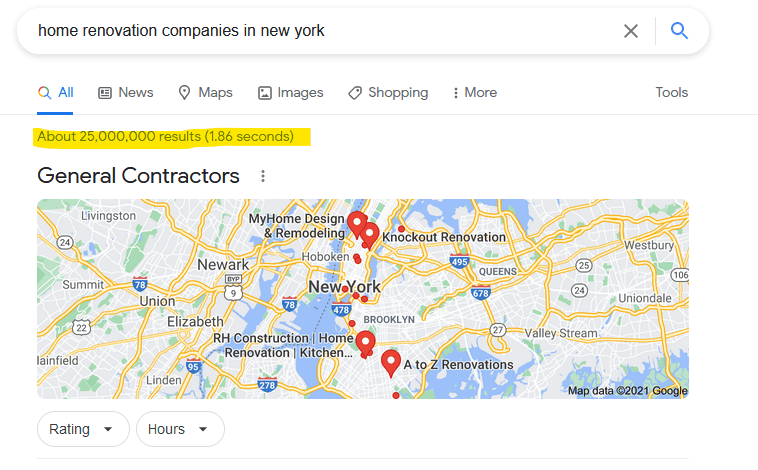Google, Bing, and Yahoo use “crawlers” to read your website, understand it, and decide whether or not they are good enough to be stored in their database and then shown. By understanding the basics of how websites get indexed and rank, you can be one step ahead.
Crawlers aren’t mythical creatures.
They are basically robots that read your entire website code to understand what your business is all about. It’s important because that’s how the entire system benefits your website.
After these robots scan your website, it’s time to decide whether it will be indexed, shown, or discarded.
So, how do websites actually get indexed and appear on Google and other search engines?
1. Search engines need to know your website exists
Imagine you are looking for a very specific box of cereals, standing in a store with 278,000,000 different brands. How in the world are you going to find the one you want if there was nothing pointing out to it?
You have to show search engines where you are (so they can then show people where you are)

2. Your website must be easy to read and understand
Not every code your website is built with is equally easy to understand for these machines. If they can’t read it, they can’t understand what you’re all about.
So, you have to make it easy for search engines to read and understand you.
If it seems relevant and useful, they index it to suggest to searchers.
3. Your pages must have some sort of relevancy
Google and other search engines can understand what the goal of your webpage is. They use this information to decide whether or not they will recommend your site when someone is searching.
If your website is relevant to an industry, they will recommend it. If it is not, then they will skip it.
An easy example is to go make a search for yourself:
Google will not show you “designer blue suede shoes” if you’re looking for “car retailers in new york”
4. Give Google good reasons to rank you higher
Search engines rank all the indexed pages based on how useful the content is. This is where the +200 ranking signals come into place. But, the ranking system exists because they can’t show 59,000,000 results on a single page.
If they deem the content good enough to be shown, they will show it in higher positions, to people that might find it more useful.
Google alone uses over 200 factors to decide whether a website is worth ranking higher or not. And these factors go from the age of your website, to how good of an experience it provides to your users. Even Bing and Yahoo, which are less popular, are also a force to reckon with and have their own ranking factors.
So, all you have to do is give Google, Bing, and Yahoo reasons why your website should be on the 1st page and not the 50th.
How Easy It Is To Be Indexed and Rank?
First of all, ranking in 1st place is not the ultimate goal of SEO. And if that’s your most important goal, chances are you’re going to spend a lot of time, money, and end up frustrated.
Imagine there are 325 businesses competing for the first page on a specific product or service in your area.
It’s not going to be as easy to be on the first page as it would if there were only 6 or 6 businesses competing.
In fact, those numbers are not unrealistic at all.
If a contractor offers bathroom remodeling services, he probably has to compete against:
- Other remodeling contractors
- Remodeling companies
- General construction companies
- General contractors
- Architects
- Bathroom designers
- Even home improvement stores

Same for every other industry out there. And the less local they are, the harder it is to knock down the competition.
For example, a SaaS company that offers office management software without geographical limitations will find fierce competition.

You have to compete against bigger and smaller companies. Other local, regional, national, and international SaaS providers want to be in the first place as much as you do.
Even against blogs and informative websites that provide people their insights on “office management software”.
So, optimizing your website is sometimes a simple task, but ranking is not always as easy.
On the bright side. Even if your business doesn’t appear on the first page of every search result every single time, chances are that after some months of SEO and content creation you will start enjoying the compound benefits of inbound marketing and get your website from 10 visitors a month to a 1,000.


